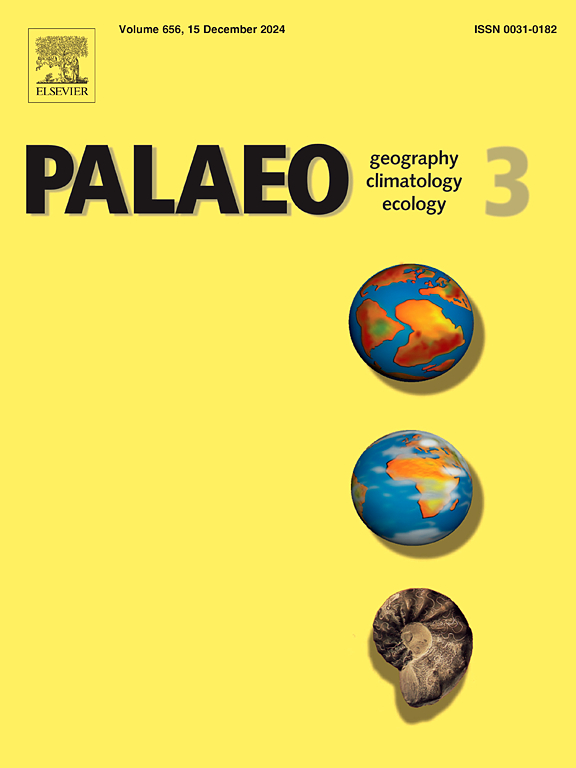Neogene sedimentary evolution of biogenic reefs on an isolated volcanic cone in the southern South China Sea
IF 2.6
2区 地球科学
Q2 GEOGRAPHY, PHYSICAL
Palaeogeography, Palaeoclimatology, Palaeoecology
Pub Date : 2025-01-30
DOI:10.1016/j.palaeo.2025.112784
引用次数: 0
Abstract
Shallow-water reefal carbonates have been widely distributed in the southern South China Sea (SCS) since the Oligocene. However, the Neogene evolution history of biogenic reefs of south SCS is still rarely known due to the lack of well-dated stratigraphic records, except for limited biostratigraphic data of some petroleum boreholes on the continental margin. One scientific borehole (NK1) was drilled on one isolated volcanic cone and Cenozoic reefal carbonate strata were uncovered in the southern SCS. In this study, the previous chronological framework since the Late Miocene was renewed by cyclostratigraphic analysis of gamma ray (GR) series. The sedimentary noise modeling identified six sea-level cycles since the Late Miocene in the southern SCS, consistent with other regional and global eustatic changes. The ∼1.2 Myr periodicity of sea-level fluctuations in Well NK1 corresponds well with the obliquity cycle, indicating that orbital cycles have dominated sea-level fluctuations in southern SCS. The correlation coefficient analysis based on Monte Carlo simulations found that carbonate accumulation rates were the lowest on the Meiji Atoll when the sea-level rose to the highest position during the Pliocene. Biogenic reefs were more prosperous in the Late Miocene and Pleistocene. This study reveals astronomical forces dominated the Neogene evolution of biogenic reefs on a carbonate island in the southern SCS.
求助全文
约1分钟内获得全文
求助全文
来源期刊
CiteScore
5.90
自引率
10.00%
发文量
398
审稿时长
3.8 months
期刊介绍:
Palaeogeography, Palaeoclimatology, Palaeoecology is an international medium for the publication of high quality and multidisciplinary, original studies and comprehensive reviews in the field of palaeo-environmental geology. The journal aims at bringing together data with global implications from research in the many different disciplines involved in palaeo-environmental investigations.
By cutting across the boundaries of established sciences, it provides an interdisciplinary forum where issues of general interest can be discussed.

 求助内容:
求助内容: 应助结果提醒方式:
应助结果提醒方式:


